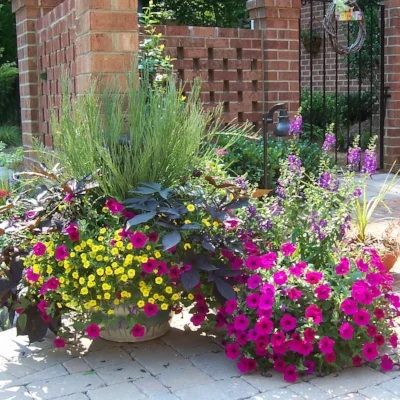Camellia Leaf Gall
Camellias are relatively unfussy and problem-free shrubs, but they can develop camellia leaf gall, a unique and odd-looking disease. Here’s how to identify and treat it.
Symptoms are a fleshy thickening of the leaf, sometimes with a distinct “orange peel” texture. The affected leaves are also pale green in color, occasionally blushed with pink. It’s usually seen on new growth in spring, more commonly on Camellia sasanqua than C. japonica varieties. Affected leaves stand out like a sore thumb and ID is pretty easy.
Camellia leaf gall is caused by the fungus Exobasidium camillae, and only affects camellias, so there is no concern with it spreading to other landscape plants. If left alone, eventually the thickened leaf will rupture and whitish fungal spores will be released. Eventually the entire leaf becomes hardened and brown.
Treatment is simple-prune off and dispose of the affected growth in the trash (in a closed plastic bag to avoid spreading the disease) as soon as you notice it. Do not compost infected leaves. The rest of the plant will not require treatment as the infection is contained to the affected leaves. To avoid infection, always rake up fallen leaves, and try to keep foliage dry.
Preventive fungicides applied at bud break can prevent camellia leaf gall, but the disease is so low-impact and easy to treat that the time and expense is usually unwarranted unless there is a history of extensive infection.

Here are the common ways your landscape is telling you it needs help.
Controlling fall and winter weeds is a constant battle. Here are some of the reasons control can be difficult.
New Garden Landscaping & Nursery feels that Boxwood Blight could have a major impact on landscapes containing boxwood in the near future. Here’s what you need to know about the disease.
Since fall is the time to plant spring blooming bulbs, here are the answers to some common questions about bulbs.
Don't panic, there are a few common (and benign) reasons that trees drop leaves in summer.
Ugh! What’s nastier than a sack of crawly caterpillars hanging from your trees? How about a dozen of ‘em?
Quick tips for avoiding the fungal disease Brown Patch in lawns
Blueberries make great container plants! Watch this video from our friends at Espoma for tips and see how easy it is to grow blueberries in containers.
Good container plantings require little maintenance aside from watering and can enhance your home through the spring, summer, and fall.
Unlike some other flowering plants, crapes will develop their flower buds on new growth.
This is a question we have been asked frequently this fall.
Where and why this is not bad advice, and where it’s a terrible idea.






















